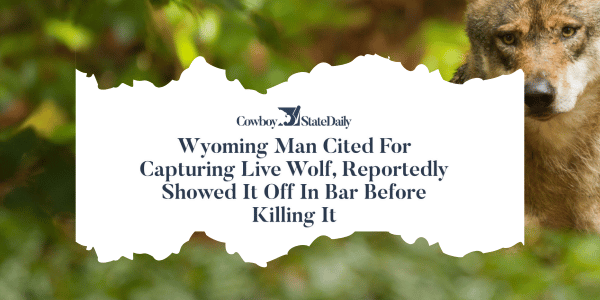Photo credit: USFWS
Black-footed ferret (Mustela nigripes) | ESA status: endangered and experimental, non-essential
Black-footed ferret
Black-footed ferrets are charismatic animals with black masks and feet and a playful demeanor. Though only 18 to 24 inches long and weighing between 1.5 and 2.5 pounds, they are fierce little predators able to take down prey animals their size and sometimes larger. Rarely seen except at night, black-footed ferrets are secretive and nocturnal. Great dancers, they perform a characteristic open-mouthed, arch-backed backward hop when playing. Black-footed ferrets were listed as endangered under the Endangered Species Act in 1967.
What do black-footed ferrets eat?
Though their bodies are long, thin, and bendy, in some ways black-footed ferrets are not very flexible: they are a specialized prairie dog predator and eat almost nothing else. Approximately 100 to 150 acres of prairie dog colony is required to support a single black-footed ferret.
The ferret/prairie dog link
The link between black-footed ferrets and prairie dogs is so strong that when prairie dog populations plummeted, so did ferret populations, until almost no black-footed ferrets were left in the wild.
Federal extermination campaigns poisoned and shot prairie dogs by the hundreds of thousands to placate livestock growers. The grassland habitat of prairie dogs and black-footed ferrets began to shrink, as it was converted to cropland or other forms of human development. Then came disease: sylvatic plague, an introduced infectious bacterial disease, swept through entire prairie dog colonies, causing nearly 100 percent mortality. Any ferret unlucky enough to eat an infected prairie dog was infected in turn.
Black-footed ferret habitat
Black-footed ferrets once danced in a large area of the Great Plains, mountain basins, and semi-arid grasslands of North America. The last-known wild population of ferrets persisted in the vicinity of Meeteetse, Wyoming, until early 1987. Some of the last Meeteetse ferrets were captured and used to start a captive breeding program to save this fascinating mammal from extinction. Captive-born ferrets were reintroduced to Shirley Basin, Wyoming, in the early 1990s. Since then, reintroductions have taken place in South Dakota, Montana, Arizona, Utah, Kansas, Colorado and Chihuahua, Mexico.
Unsurprisingly, the range of black-footed ferrets correlates with the range of their prey: prairie dogs. In addition to eating prairie dogs, black-footed ferrets also use prairie dog burrows for shelter and birthing their young.
What are the threats to black-footed ferrets?
The black-footed ferret is protected under the Endangered Species Act, but the U.S. Fish and Wildlife Service eroded those safeguards by developing special rules that deny protection to prairie dogs. All five species of prairie dog have suffered dramatic declines and occupy only around two percent of their former ranges, yet wholesale poisoning and shooting of prairie dogs continues. Populations of white-tailed prairie dogs, Gunnison’s prairie dogs, and black-tailed prairie dogs—all prey for black-footed ferrets—still face many threats. Only the Utah prairie dog currently has Endangered Species Act protections.
A smaller gene pool
At present, only the reintroduced populations of black-footed ferret are known to exist in the wild. All wild ferret populations are small, fragmented, and intensively managed. Only a few wild populations include adults born in the wild.
Because their captive founding population was so minuscule, ferrets today have lost around 90 percent of their genetic diversity. This drastic decrease could lead to inbreeding and reduced fitness in the population, including immune system dysfunction and reduced reproductive success.
What WildEarth Guardians is doing to save the black-footed ferret
WildEarth Guardians wants to ensure that this captivating creature was not brought back from the edge of extinction only to disappear again. We are working to protect all five species of prairie dog and the wide variety of animals that depend on them, including the black-footed ferret.
Historical Significant Actions
Wildlife Press: Black-footed ferret
Plan to poison prairie dogs and eliminate black-footed ferret habitat on Thunder Basin National Grassland litigated
Critically endangered black-footed ferrets rely exclusively on prairie dogs for prey and on prairie dog burrows for shelter
Read more >